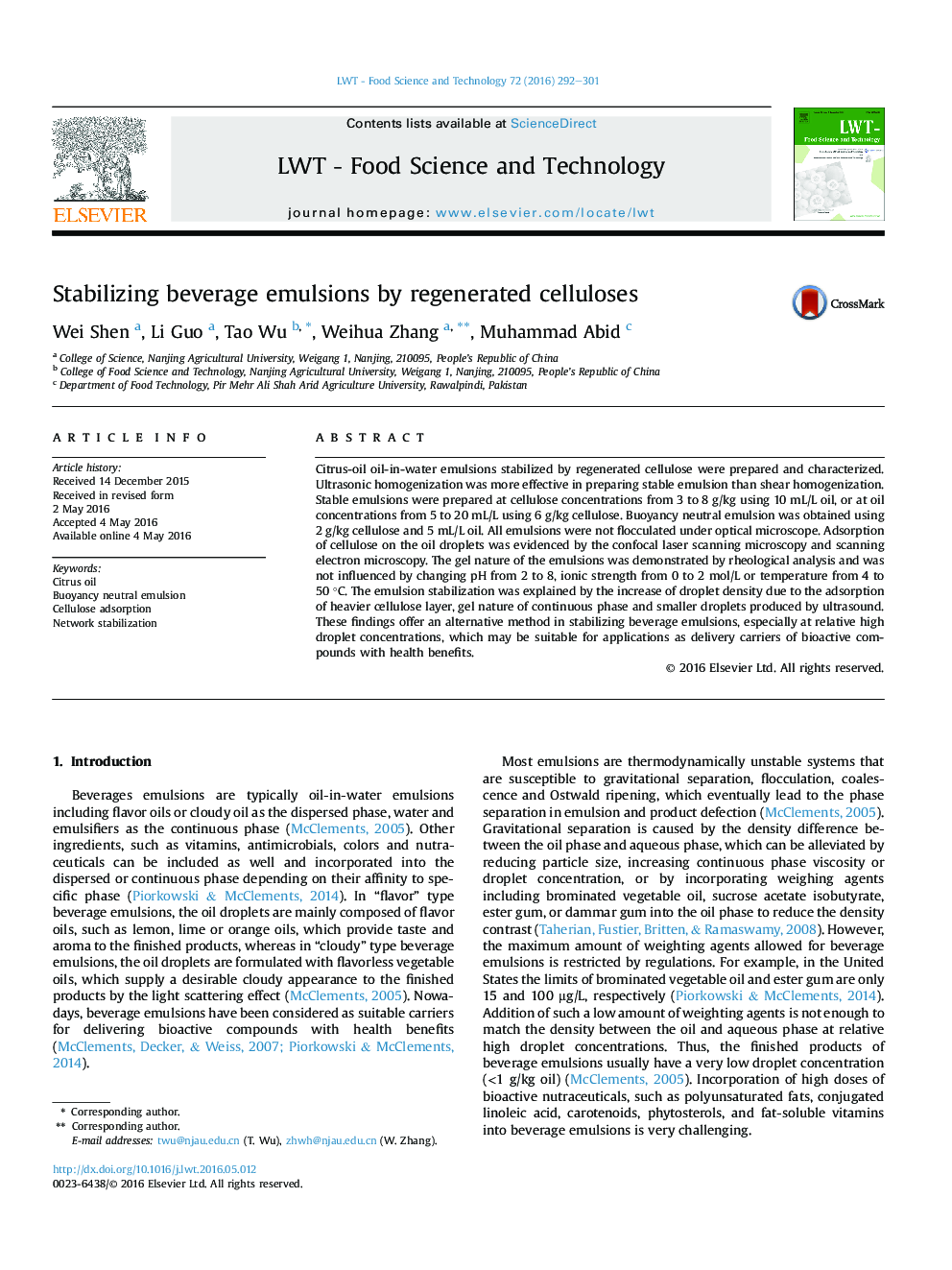| Article ID | Journal | Published Year | Pages | File Type |
|---|---|---|---|---|
| 4563285 | LWT - Food Science and Technology | 2016 | 10 Pages |
•Regenerated cellulose stabilizes citrus-oil oil-in-water emulsions effectively.•Ultrasound is more effective in preparing stable emulsion than shear.•Adsorption of cellulose causes an increase of emulsion droplet density.•Gel nature of continuous phase also contributes to the stabilization.•Smaller droplets produced by ultrasound contribute to the stabilization as well.
Citrus-oil oil-in-water emulsions stabilized by regenerated cellulose were prepared and characterized. Ultrasonic homogenization was more effective in preparing stable emulsion than shear homogenization. Stable emulsions were prepared at cellulose concentrations from 3 to 8 g/kg using 10 mL/L oil, or at oil concentrations from 5 to 20 mL/L using 6 g/kg cellulose. Buoyancy neutral emulsion was obtained using 2 g/kg cellulose and 5 mL/L oil. All emulsions were not flocculated under optical microscope. Adsorption of cellulose on the oil droplets was evidenced by the confocal laser scanning microscopy and scanning electron microscopy. The gel nature of the emulsions was demonstrated by rheological analysis and was not influenced by changing pH from 2 to 8, ionic strength from 0 to 2 mol/L or temperature from 4 to 50 °C. The emulsion stabilization was explained by the increase of droplet density due to the adsorption of heavier cellulose layer, gel nature of continuous phase and smaller droplets produced by ultrasound. These findings offer an alternative method in stabilizing beverage emulsions, especially at relative high droplet concentrations, which may be suitable for applications as delivery carriers of bioactive compounds with health benefits.
Graphical abstractFigure optionsDownload full-size imageDownload as PowerPoint slide
